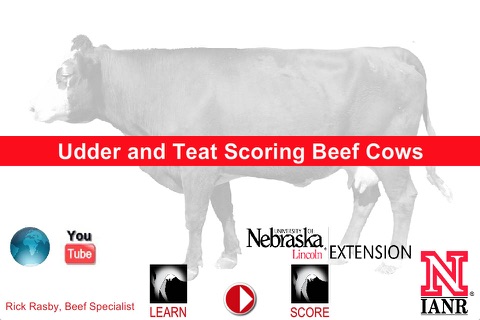
NUBeef-UTS
Entwickler University of Nebraska - Lincoln
The conformation of a beef cows teats and udder are important in a profitable cow/calf enterprise. Females with poor udder and teat conformation are a management challenge for commercial cow/calf producers. Cattle producers do not have the time or labor to manage around cows that need intervention at calving to physically milk-out a quarter(s) so that the calf can suckle or to save the quarter from infection. Research findings in two experiments indicates that the occurrence of clinical mastitis in beef cow herds was 17.5% and 11.9% resulting in a reduction in weaning weights of 12.5% and 7.3%, respectively. Poor udder and teat conformation can potentially lead to increased calf sickness as teats may be contaminated with mud and debris from a lot or calving area before the calf suckles. Although selecting and culling based on conformation of teats and udders may be considered convenience trait selection, selecting against poor teats and udders increases profit potential by increasing calf performance, reducing calf sickness, increasing longevity of the cow, and reducing labor inputs. Udder and teat conformation is moderately heritable (h2 of udder attachment = 0.2 to 0.3; h2 of teat size = 0.5), so enhancing teat and udder quality can be accomplished by selecting bulls whos female offspring have good teat and udder conformation and by not selecting replacement heifers from dams that have marginal teat and udder conformation. When selecting bulls from your seedstock provider, request the udder score of his dam or visually appraise the udder of the dam to help reduce undesirable udder conformation in your herd.



